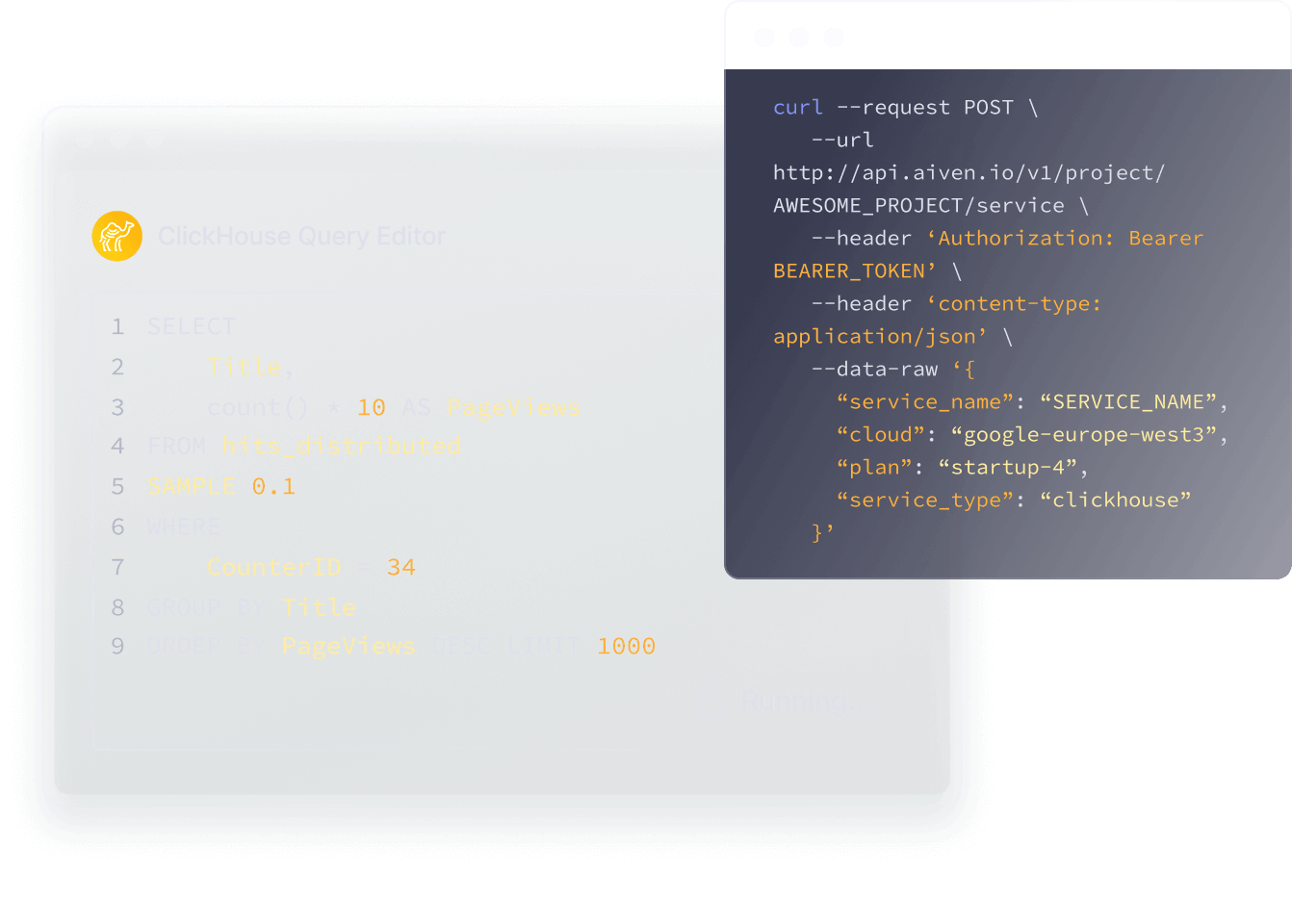Aiven for ClickHouse®
Fastest OLAP database, fully managed.
Get a production-ready ClickHouse cluster in minutes, ready to fuel lightning-fast analytics applications and query billions of rows in milliseconds.
99.99% SLA
Runs on any cloud
Start for free
Includes $300 in free credits
Trusted by developers at












































